

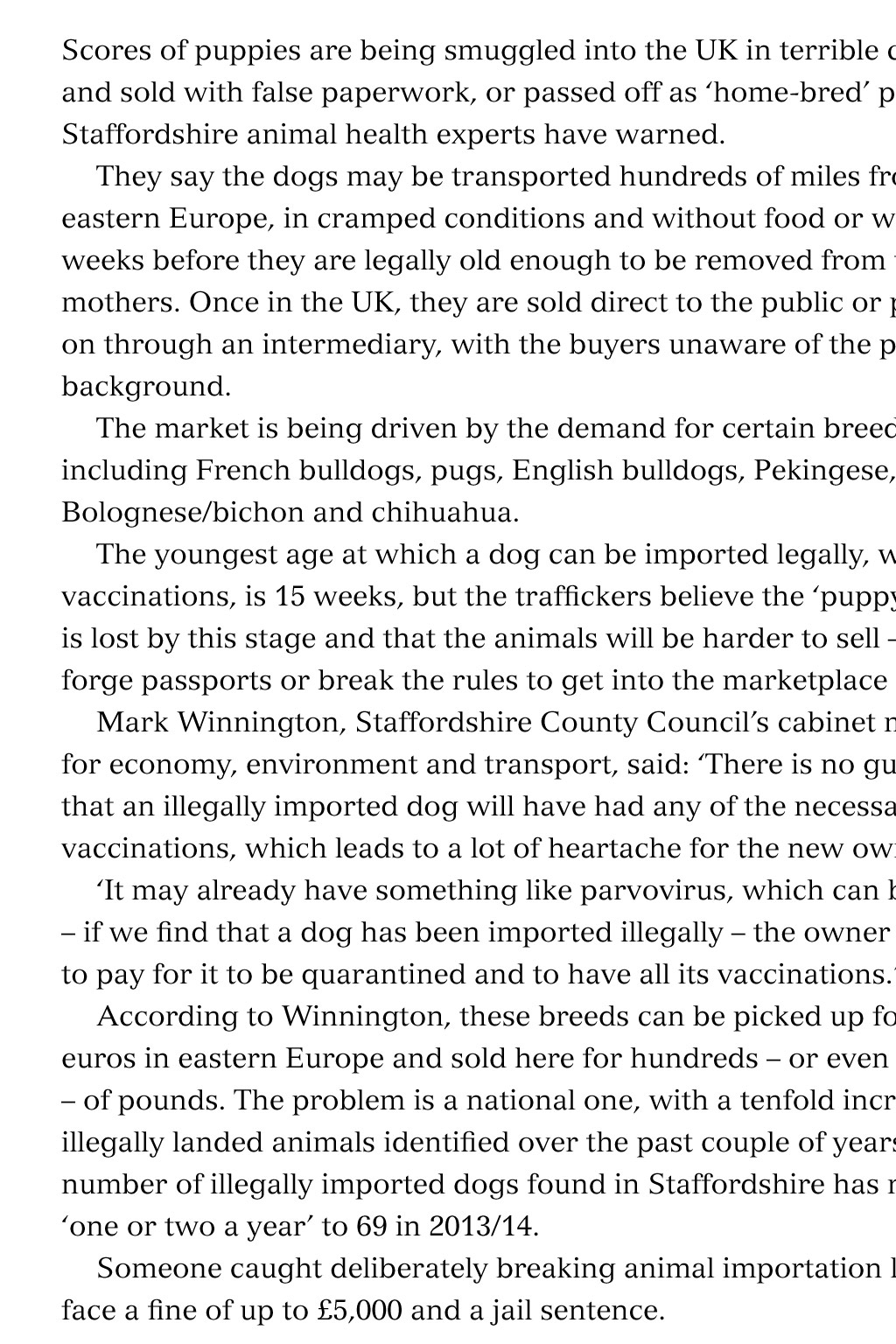

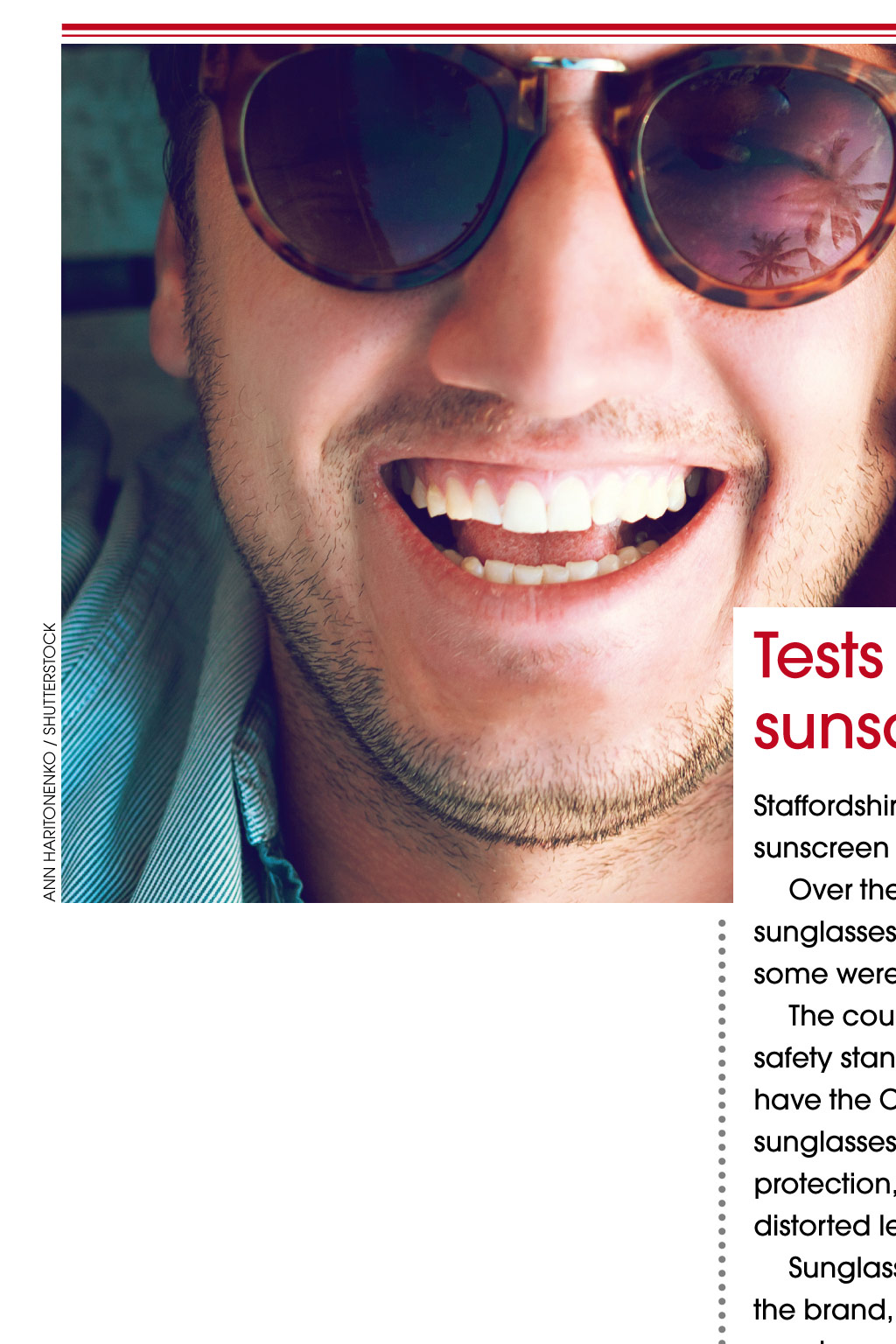
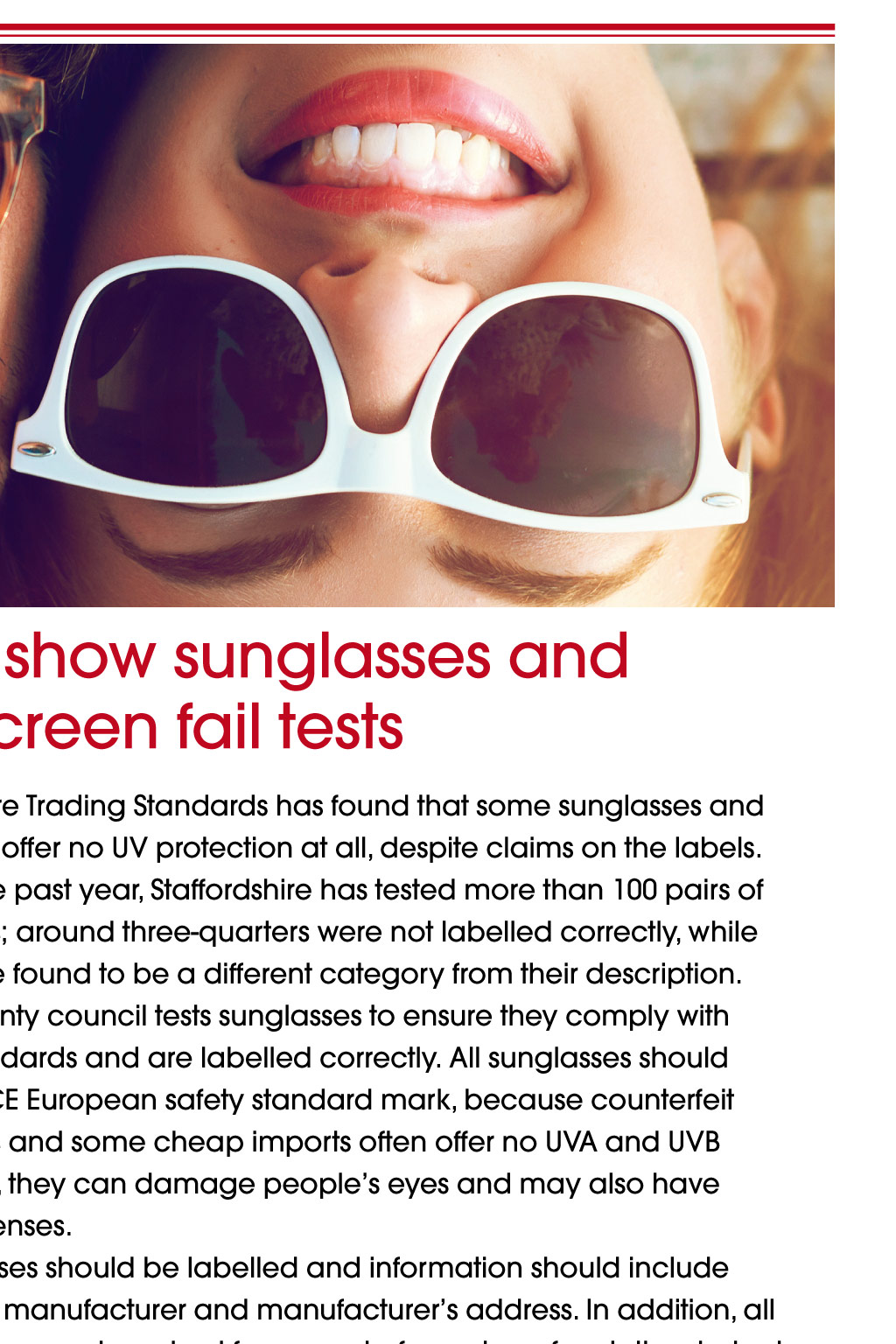
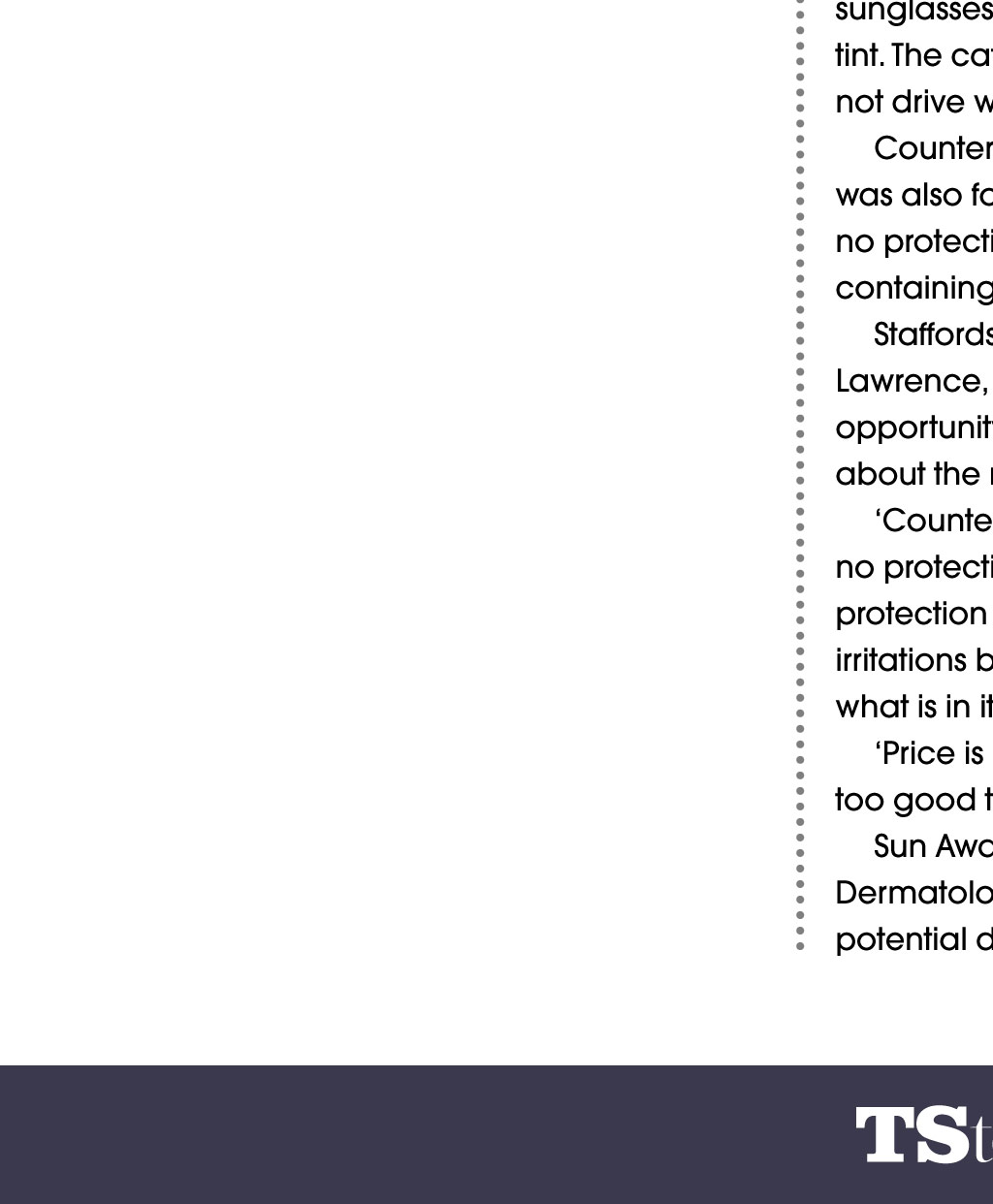
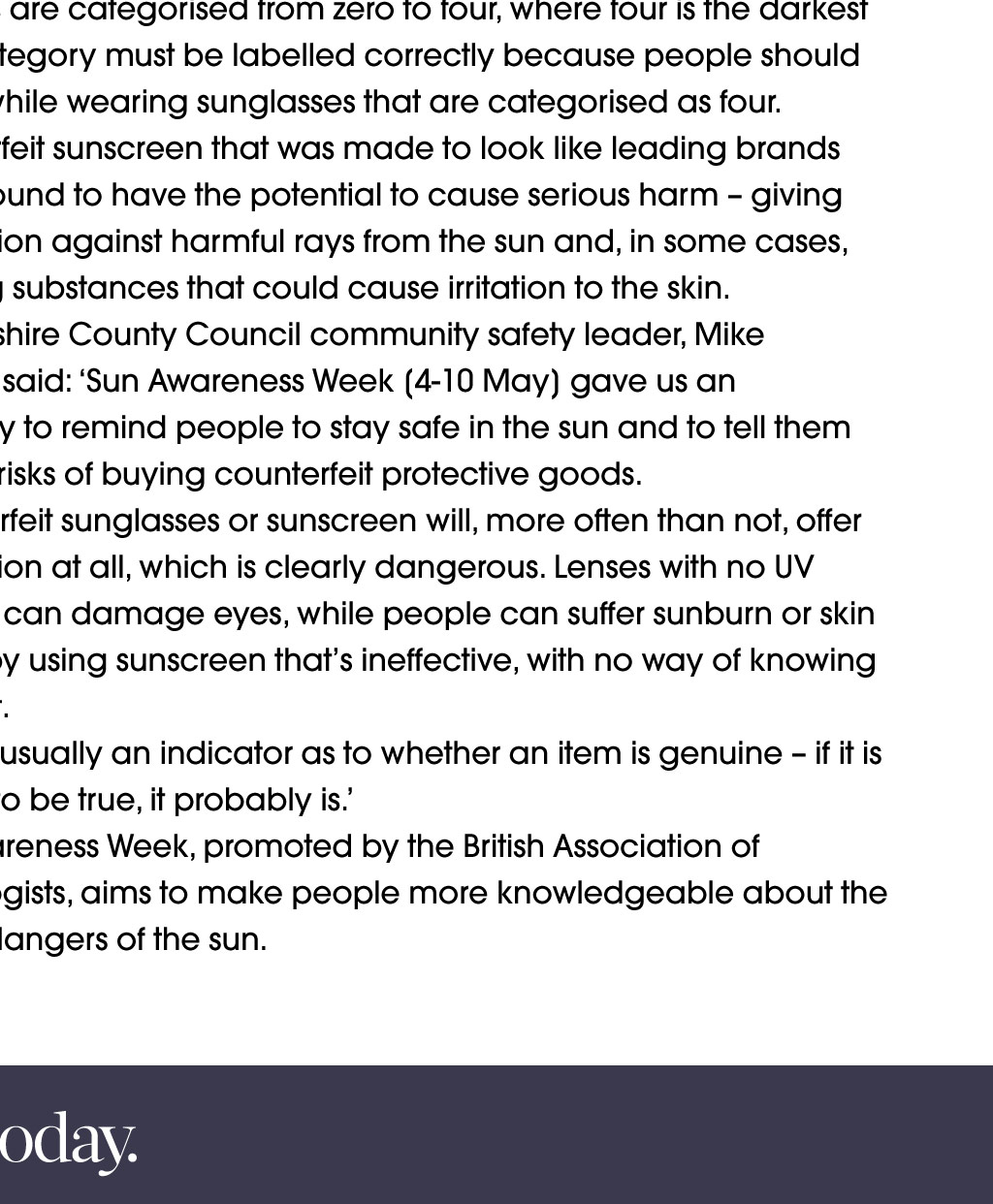 104
104

DANCESTROKES / SHUTTERSTOCK News Demand for designer breeds fuels puppy smuggling Scores of puppies are being smuggled into the UK in terrible conditions and sold with false paperwork, or passed off as home-bred pets, Staffordshire animal health experts have warned. They say the dogs may be transported hundreds of miles from eastern Europe, in cramped conditions and without food or water, weeks before they are legally old enough to be removed from their mothers. Once in the UK, they are sold direct to the public or passed on through an intermediary, with the buyers unaware of the pups background. The market is being driven by the demand for certain breeds, including French bulldogs, pugs, English bulldogs, Pekingese, Maltese, Bolognese/bichon and chihuahua. The youngest age at which a dog can be imported legally, with all its vaccinations, is 15 weeks, but the trafckers believe the puppy cuteness is lost by this stage and that the animals will be harder to sell so they forge passports or break the rules to get into the marketplace sooner. Mark Winnington, Staffordshire County Councils cabinet member for economy, environment and transport, said: There is no guarantee that an illegally imported dog will have had any of the necessary vaccinations, which leads to a lot of heartache for the new owner. It may already have something like parvovirus, which can be fatal, or if we nd that a dog has been imported illegally the owner will have to pay for it to be quarantined and to have all its vaccinations. According to Winnington, these breeds can be picked up for a few euros in eastern Europe and sold here for hundreds or even thousands of pounds. The problem is a national one, with a tenfold increase in illegally landed animals identied over the past couple of years. The number of illegally imported dogs found in Staffordshire has risen from one or two a year to 69 in 2013/14. Someone caught deliberately breaking animal importation laws could face a ne of up to 5,000 and a jail sentence. CORPORATE PLAN PUBLISHED The National Measurement & Regulation Office (NMRO) has published its first Corporate Plan. Formerly the National Measurement Office, the NMRO is aiming to simplify technical regulation for business to reduce unnecessary costs. As part of its Corporate Plan 2015-16, the NMRO will: simplify the legislative framework for weights and measures and hallmarking; provide a legal metrology infrastructure to underpin measurement of trade and confidence in the market; and provide a range of certification services that enable businesses to export their products globally. Each year in the UK alone, consumers buy more than 300bn-worth of goods by quantity, with goods worth almost the same amount weighed or measured at the industrial/business-to-business level. Read the Corporate Plan in full here. Figures released by the Civil Aviation Authority reveal that on-time performance for all scheduled flights operating from ANN HARITONENKO / SHUTTERSTOCK the UKs 10 main airports in 2014 dipped to 79 per cent one percentage point down on 2013 figures. Research by refund.me confirms that passengers are increasingly experiencing disrupted travel because of flight delays, cancellations and re-routings, with travellers in peak holiday season experiencing the worst airline punctuality. Graham Jukes OBE CFCIEH, chief executive of the Chartered Institute of Environmental Health (CIEH), has announced that he will step down from his post at the end of 2015, after 15 years of leading the organisation. Jukes will take up a new role as vicepresident of the CIEH at the start of 2016. IEF BR S IN EW N According to global couriers Fastlane International the escalating level of customer returns is costing e-tailers 20bn a year. Audiences at Multimodal 2015, held at Birminghams NEC, heard that e-tailers are grappling with return rates as high as 60 per cent, whereas five or six per cent is the norm for traditional retailers. Returns have been put down to misleading descriptions and inaccurate pictures that make an item look larger or better finished. 1 2 3 Click numbers for more stories Tests show sunglasses and sunscreen fail tests Staffordshire Trading Standards has found that some sunglasses and sunscreen offer no UV protection at all, despite claims on the labels. Over the past year, Staffordshire has tested more than 100 pairs of sunglasses; around three-quarters were not labelled correctly, while some were found to be a different category from their description. The county council tests sunglasses to ensure they comply with safety standards and are labelled correctly. All sunglasses should have the CE European safety standard mark, because counterfeit sunglasses and some cheap imports often offer no UVA and UVB protection, they can damage peoples eyes and may also have distorted lenses. Sunglasses should be labelled and information should include the brand, manufacturer and manufacturers address. In addition, all sunglasses are categorised from zero to four, where four is the darkest tint. The category must be labelled correctly because people should not drive while wearing sunglasses that are categorised as four. Counterfeit sunscreen that was made to look like leading brands was also found to have the potential to cause serious harm giving no protection against harmful rays from the sun and, in some cases, containing substances that could cause irritation to the skin. Staffordshire County Council community safety leader, Mike Lawrence, said: Sun Awareness Week [4-10 May] gave us an opportunity to remind people to stay safe in the sun and to tell them about the risks of buying counterfeit protective goods. Counterfeit sunglasses or sunscreen will, more often than not, offer no protection at all, which is clearly dangerous. Lenses with no UV protection can damage eyes, while people can suffer sunburn or skin irritations by using sunscreen thats ineffective, with no way of knowing what is in it. Price is usually an indicator as to whether an item is genuine if it is too good to be true, it probably is. Sun Awareness Week, promoted by the British Association of Dermatologists, aims to make people more knowledgeable about the potential dangers of the sun.